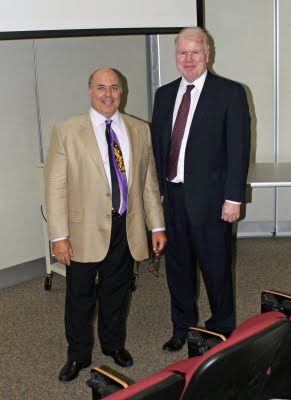6th International Congress on Behavioral Optometry
ICBO Call for papers
RULES FOR SUBMISSION
The International Conference of Behavioral Optometry is soliciting abstracts for papers and posters to be presented at the 2010 Meeting. Any person wishing to make a presentation is invited to submit a proposal as outlined below. Proposals may include research results, case studies, or new and innovative diagnostic procedures or treatment techniques.
INSTRUCTIONS FOR SUBMITTING ABSTRACTS:
Abstracts will be accepted as oral or poster presentations
Abstracts submitted by fax will not be accepted
Presenting authors must be registered participants and attend the meeting
Submission of an abstract acknowledges your acceptance for the abstract to be published in all printed material of the Meeting
Abstracts will be published in The Journal of Behavioral Optometry.
Abstracts must be original and must not have been published or presented at any other meeting prior to the ICBO 2010 Meeting
Abstracts must be submitted in English
All studies must have been approved by institutional committees on ethics of experimental and human investigations
Abstract title - limited to 20 words
Abstract text - limited to 350 words, including acknowledgements.
Abstracts of research projects should clearly state:
Background and aims
Methods
Results
Conclusions
Abstracts of case reports should clearly state:
patient’s symptoms
findings, diagnosis
treatments
outcomes
Abstracts of diagnostic or therapeutic techniques should clearly describe:
the procedure
its applications
its unique or innovative characteristics.
Use only standard abbreviations. Place special or unusual abbreviations in parentheses after the full word appears the first time.
Use generic names of drugs. Express numbers as numerals.
Conflicts of Interest / Disclosure: Work submitted for presentation must include an acknowledgement of funding sources of commercial nature and/or consulting or holding of significant equity in a company that could be affected by the results of the study
Topics of Specific Interest
· Visual Fields - testing and treatment
· Vestibular issues - balance and dizziness, treatment to resolve these problems
· Mid-Line shift - spatial perceptions post trauma, concepts of changing spatial transformation
· Driver rehabilitation - innovations in driver rehabilitation
· Learning/Development theory
· Vision therapy - group versus one-on-one
· Vision therapy - home-based therapy versus in-office only
· Vision therapy - curriculum-based versus specific treatment for specific diagnosis
SELECTION CRITERIA
Each abstract will be reviewed for the following elements: (1) scientific and clinical quality; (2) broad appeal to the interests of the meeting attendees; (3) multidisciplinary nature; (4) timeliness of the topic.
Each complete submission received by August 1, 2009 will be independently peer-reviewed and rated on a blind evaluation basis.
First authors will be notified of acceptance or rejection by October 1, 2009.
AVOIDANCE OF COMMERCIALISM
All presentations must avoid commercialism. Presentations that constitute promotion and advertising will be prohibited. This specifically includes pervasive and inappropriate use of logos.
No advertising matter of any description may be distributed. No material may be displayed that in any way directly promotes the commercial interest of any particular company or enterprise, or of the author(s)/presenter(s).
If the cost of presentation has been underwritten to any extent, a clear acknowledgment stating support and identifying the particular source should be included (e.g., "The support of [name of corporation/institute] for this project is gratefully acknowledged.")
EXPENSES
ALL accepted presenters/authors/speakers are required to register for the conference, and are fully responsible for all of their expenses related to the conference (e.g., registration, airfare, hotel, meals).
Deadline for submission of abstracts: September 1, 2009
Submit electronically to:
[email protected]
.jpg)
.jpg)
